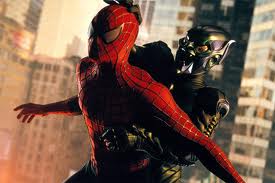Seven Brides for Seven Brothers
Posted on December 13, 2002 at 5:17 am
Plot: Handsome backwoodsman Adam Pontabee (Howard Keel) strides into town, singing “Bless Your Beautiful Hide” to his future wife “whoever she may be.” He has given himself one day to find a wife to take back to his ranch. He meets Milly (Jane Powell), a spirited waitress, proposes, and she accepts. He neglects to tell her that back at the ranch are his six brothers, and that he is bringing her back to cook and clean for all of them.
She is hurt, feeling that he wanted a housekeeper more than a wife, and she is horrified when she meets the brothers, who are boorish slobs. The next morning, she informs the brothers that they must learn to behave. They come to love her for her courage and values, and begin to long for wives of their own. She brings them to a barn raising, where they each fall in love. Back at the ranch, they long for their girls. Adam tells them they should go into town and steal them, just as in the story of the “Sobbin’ Women” (the ancient Roman tale of the Sabine women). They do, but the women are furious, and won’t have anything to do with them, even though they are snowed in at the ranch until the spring thaw. Milly is so angry with Adam for telling the brothers to kidnap the girls that he leaves to spend the rest of the winter in a hunting cabin, not knowing that Milly is pregnant. The girls soften toward the brothers, and by spring, are ready to marry them, in one big ceremony. And Adam returns, realizing how much Milly means to him.
Discussion: This movie includes some of the most thrillingly energetic dances ever put on film, including the classic barn-raising number (which unfortunately suffers on the small screen). Based on a short story by Stephen Vincent Benet, it is almost an icon of America as it saw itself in the 1950s — brash, energetic, adventuresome, and cocky. Some critics have complained that the movie all but promotes rape, but that is unfair. Even though the girls are very attracted to the brothers, they are very angry at being kidnapped, and the brothers are banished to the barn. They must earn their way back into the girls’ affections by treating them with courtesy and respect, and ultimately it is very much the girls’ own decision to stay and marry them. With the help of youngest brother Gideon, Milly teaches Adam that even though she accepted his proposal quickly, she is still worth earning.
Questions for Kids:
· How does the barn raising dance number help to tell the story?
· Milly and Adam get married very quickly without talking about what they want. How does that create problems?
· How does Milly show how important family is to her?
· Why is it hard for Adam to realize how important Milly is to him?
· How does Milly show how important family is to her?
· Why is it hard for Adam to realize how important Milly is to him?
Connections: Handsome baritone Howard Keel starred in a number of movie musical classics, including “Kiss Me Kate,” “Showboat,” and “Annie Get Your Gun.” Jane Powell starred in “Royal Wedding” and a number of lesser musicals. Russ Tamblyn appeared in “West Side Story” and “tom thumb.” Ephraim is played by ballet superstar Jacques D’Amboise, whose work with kids was later featured in the Academy Award winning documentary “He Makes Me Feel Like Dancing.” Dorcas is played by Julie Newmar (then called Newmeyer), whose autographed photo provided the title for the 1995 release, “To Wong Foo With Love, Thanks for Everything, Julie Newmar.”

